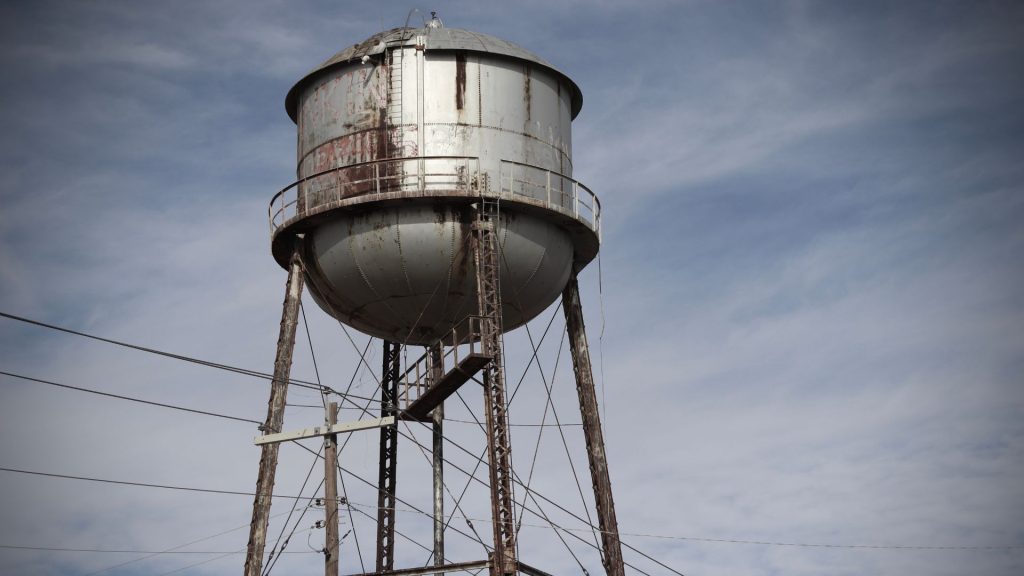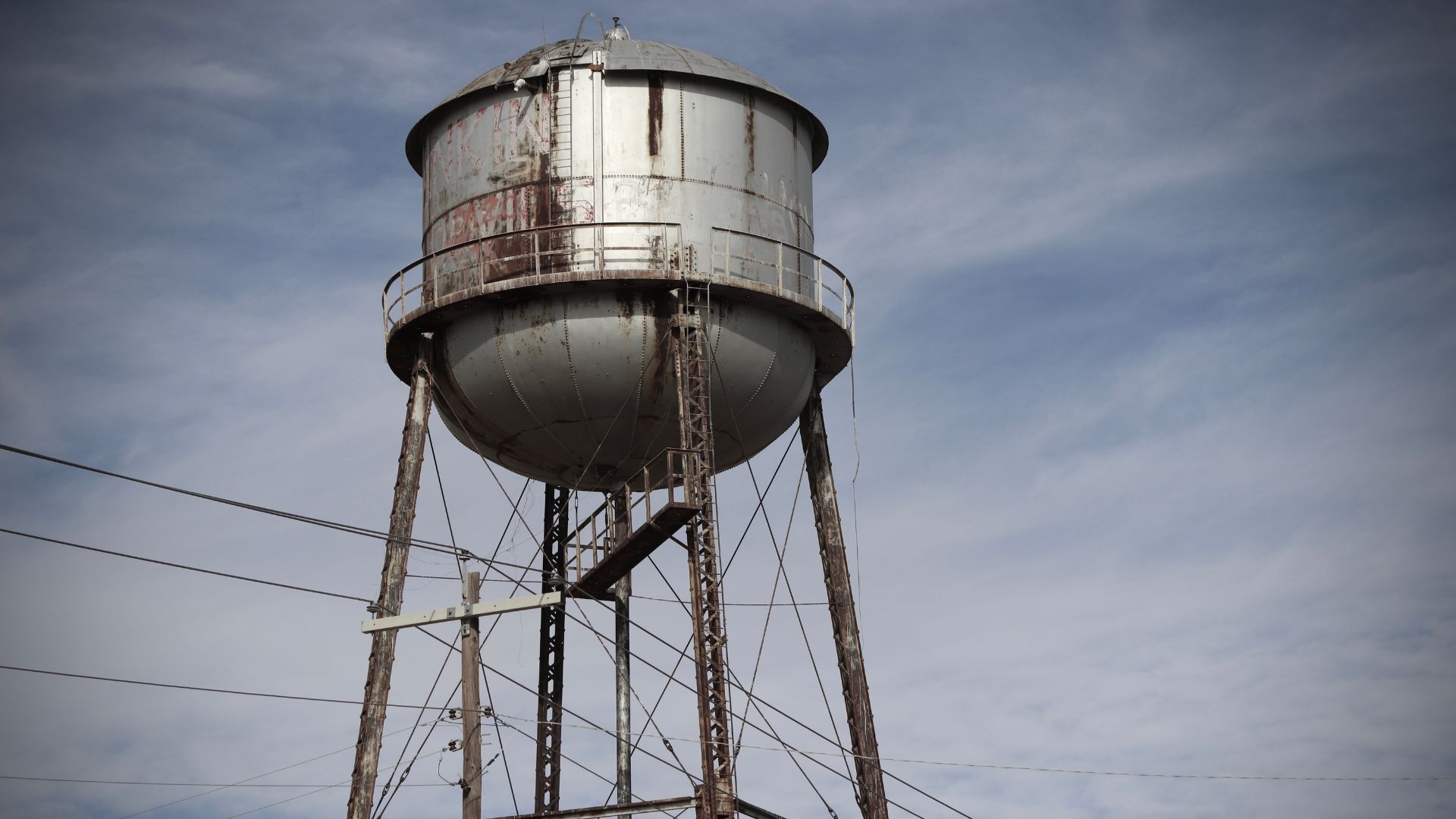posted by Custom Coatings, Inc. on April 19th, 2024
5 Signs It’s Time For A Water Tank Painting Refresh
Is your water tank showing signs of wear and tear? A fresh coat of paint can do wonders. This article will guide you through the five major signs that it’s time for a water tank painting refresh, helping to protect your investment and ensure clean water.
Keep reading to find out how.
Key Takeaways
- Visible signs like rust, corrosion, cracks, or leaks indicate that the tank’s structure may be at risk and need immediate attention.
- Bacterial growth in water tanks can cause health problems, showing the importance of regular painting and maintenance.
- The age of a water tank affects its condition; older tanks might not show visible signs but still require care to prevent leaks or contamination.
Signs that Indicate a Need for Water Tank Painting

Your water storage tank might not be in its best shape if you spot paint starting to fade or chip away. When rust or cracks begin showing, it screams for a new coat of paint to keep everything running smoothly.
Fading or chipping of paint
Fading or chipping of paint on water tanks signals a need for immediate attention. This deterioration acts as a red flag, showing that the protective layer is no longer effective. Once the paint starts to wear off, the underlying material becomes exposed to elements like air and moisture.
These conditions speed up rusting and corrosion, putting the tank’s integrity at risk.
Acting quickly can prevent further damage and ensure your water storage remains in top condition. Proper surface preparation followed by applying suitable primers and paints will restore the tank’s protection against corrosive forces.
It’s essential for maintaining both the function and appearance of water towers or storage containers, setting the stage for addressing visible rust or corrosion next.
Visible rust or corrosion
Moving from issues with paint, another critical sign that your water tank needs attention is the presence of visible rust or corrosion. This warns us that the tank’s structure might be in danger.
Rust eats away at metal, weakening it and possibly leading to holes where water can escape. Or worse, harmful substances could find their way into your water supply. Keeping an eye out for these red flags is vital to avoid such risks.
Acting promptly by scheduling a fresh coat of paint on your storage tanks can ward off further decay caused by rust and corrosion. This protective layer shields against harsh weather and keeps the water clean and safe for use.
It also means you sidestep more severe problems down the line that could demand pricey fixes or even total replacement of parts like pipes or concrete bases due to damage from corroding elements.
Ensuring these areas remain free from rust not only upholds safety regulations but also extends the life of your investment significantly, saving money over time.
Cracks or leaks in the tank
Spotting cracks or leaks in your water tank signals it’s time for a refresh. Water can escape through these gaps, leading to waste and possibly structural damage over time. These issues call for immediate attention; left unattended, they can worsen and become more expensive to fix.
Sand blasting prepares the surface by removing rust and old paint, making it ready for new coatings that seal the tank against future leaks.
Leaks not only cause loss of water but also risk contamination from outside sources. This scenario poses a direct threat to health if the water is meant for consumption or other sensitive uses.
OSHA standards emphasize compliance with safety regulations to prevent such risks in commercial settings. Dehumidification during the coating process ensures proper adhesion of paints and prolongs their life span on your tank, preventing cracks or leaks from developing too soon again.
Bacterial growth or contamination
Bacterial growth in your water tank poses a serious health risk. Left unchecked, it can lead to illnesses for anyone drinking or using the water. Regular painting and maintenance are key to preventing these dangerous bacteria from taking hold.
If you notice any changes in the water’s quality, taste, or odor, these could be signs that bacteria are present.
Professionals use specific tools and techniques to spot and address bacterial contamination during a water tank refresh. They apply coatings that not only stop rust but also prevent bacteria from growing again.
This process ensures the water remains safe for everyone at your facility.
Next up is understanding how the age of your tank impacts its condition and performance.
Age of the tank
Just as bacterial growth or contamination can signal the need for a fresh coat of paint, so can the sheer age of your water-storage tank. Over time, even tanks with the most durable paints face wear and tear from weather and use.
This aging process might not always be visible through obvious signs like cracks or rust. Yet, it slowly impacts the tank’s integrity and looks, making it crucial to schedule regular maintenance based on how long you’ve had the tank.
Old tanks pose more than just an aesthetic concern; they become a risk management issue too. The older a water-storage system gets, without updates to its coating, the higher the chance for leaks or contamination which could lead to toxic waste challenges.
Staying ahead with timely painting refreshes helps prevent these risks by keeping your infrastructure in top shape while ensuring a clean water supply for everyone relying on it.
Benefits of Regular Water Tank Painting

Regular water tank painting stops damage to the structure. It ensures the water stays clean and safe for use.
Protects against structural damage
Painting your water tank plays a crucial role in shielding it from structural harm. The layer of paint acts as a defender, keeping corrosion and rust at bay. These two enemies can weaken your tank if left unchecked, leading to serious damage or even a complete failure of the structure.
By maintaining a fresh coat of paint, you significantly reduce these risks and ensure that the tank remains strong and functional for years to come.
Having this protective barrier means you avoid expensive repairs or replacements down the line. Think of painting as an investment in your property’s infrastructure—one that pays off by preserving the integrity and lifespan of your water storage system.
Keeping up with regular painting schedules doesn’t just save money; it also maintains safety standards, ensuring that both the water inside and the surrounding environment are not compromised by structural issues.
Ensures safe and clean water supply
Beyond stopping structural harm, regular water tank painting plays a crucial role in maintaining a safe and clean water supply. This essential upkeep act wards off contamination threats such as rust, corrosion, and harmful bacteria from entering the water we depend on daily.
By choosing high-quality coatings for your tanks, you effectively block these contaminants, ensuring that the water remains pure and safe for use.
Custom Coatings Inc. specializes in providing coating services that cater to commercial and industrial needs, aiming to safeguard your water supply against pollutants. With a focus on serving sectors like education, healthcare, and residential markets, this commitment extends the lifespan of water storage facilities while also cutting down maintenance expenses over time.
Applying fresh paint not only revives the appearance of your tanks but more importantly secures the quality of water within them against potential health risks.
Improves the appearance of the tank
After ensuring your water supply is clean and safe, giving your tank a painting refresh can significantly boost its look. A fresh coat of paint transforms an old, worn-out tank into one that appears brand new and well-kept.
This change not only elevates the overall appeal but also reflects positively on the maintenance standards of your facility.
Painting your water tank with bright and appropriate colors makes it stand out in a good way. It becomes easier to clean and promote better hygiene due to the smooth surface finish.
For commercial property managers, this upgrade is a smart move as it adds to the aesthetic value of your property without requiring substantial investments or major renovations.
Process of Water Tank Painting
Painting a water tank starts with getting the surface ready. Workers clean and smooth out the tank’s outer layer to make sure the new paint sticks well. They then pick the right kind of coatings that will last long and guard against rust.
The next step is putting these coatings on carefully, making sure every inch gets covered. Finally, they finish up by checking their work and cleaning up any mess made during the job.
This process helps keep water tanks in top shape for years to come.
Surface preparation
To get your water tank ready for a fresh coat of paint, the first step is making sure the surface is clean. This means removing any old paint, rust, or grime that has built up over time.
Workers use tools like sanders and scrapers to do this job right. Then they must fix any parts of the tank that are damaged. They fill in cracks and smooth out rough spots to ensure the new paint will stick well and look good.
Next comes making sure the tank’s surface is spotless and free from anything that could spoil the new paint job. Techniques include washing with special solutions to break down oils and grease, followed by a thorough rinse with clean water.
Only after these steps can painters start applying the new coatings, ensuring your tank not only looks great but is also protected against future damage.
Selection of suitable coatings
Picking the right coatings for your water tank is a critical step. Custom Coatings Inc. knows that not all paints are equal, especially for commercial and industrial use. They bring their experience from 1991 to every job, choosing coatings that protect against rust, leaks, and bacterial growth.
These high-quality options ensure clean water and keep the tank in top shape for years.
Custom Coatings Inc. pays close attention to each project’s specific needs. They offer high-tech solutions that work best for sealing and restoration tasks on any tank surface. Whether dealing with extreme weather or harsh chemicals, they select products designed to stand up to tough conditions while keeping your water safe and the tank looking great.
Application of coatings
Experts apply coatings to water tanks using high-tech materials. These layers protect your tank from damage, ensuring it can hold water safely for years. The process starts with choosing the right type of paint, one that will stick well and last long on the exterior of your tank.
The team uses specialized tools like sprayers and brushes to evenly cover every surface. They work carefully around each part of the tank, making sure no spot is missed. This step is crucial for keeping water clean and safeguarding against leaks or corrosion over time.
Finishing work
After applying the coatings, the next critical step is the finishing work. This part makes sure that your water tank stands up to weather and corrosion over time. Crews apply a high-quality sealant to lock in protection.
They focus on every inch of the surface, ensuring no spot misses out on this crucial layer. This task demands skill and attention to detail.
Professional painters know how essential this phase is. They use advanced tools like sprayers and brushes designed for precision coverage. These actions shield your tank from harmful elements and extend its life significantly.
For commercial property managers and facility managers, investing in expert finishing work means securing a durable, visually appealing water tank for years ahead.
Waste management
Handling waste correctly is a big part of the water tank painting process. We make sure all old paint, cleaning substances, and any dangerous waste are thrown away properly. This step keeps our work environmentally friendly and meets strict industry rules.
Our team takes this seriously because we care about quality in every aspect of our job, including how we handle leftovers.
This approach ensures that everything from used paintbrushes to safety gear doesn’t harm the planet. We follow a strict plan for disposing of hazardous materials safely and efficiently.
For commercial property managers and facility managers, knowing that their projects respect environmental guidelines offers peace of mind while maintaining high standards in both appearance and compliance.
Water Tower Painting Services
Custom Coatings Inc. has set the standard in water tower painting services since 1991. They craft detailed, easy-to-understand proposals for every project, ensuring that property managers know exactly what to expect.
Their team excels at sealing cracks, restoring worn surfaces, and applying advanced coatings to protect your water towers against the elements and time.
They focus on quality work that meets client needs from start to finish. With a commitment to excellence, Custom Coatings Inc. uses cutting-edge techniques and materials for long-lasting results in water tower projects.
This attention to detail guarantees satisfaction and safeguards your investment. Next up: how these services translate into benefits for commercial and industrial settings.
Commercial and Industrial Water Tank Painting Projects
Commercial and industrial water tank painting projects need special attention. These tanks hold a lot of water for manufacturing plants, office buildings, and other large facilities.
Keeping them in good shape protects the structure from damage and ensures the water inside stays clean. Regular inspections find problems like rust or leaks early on. Then, choosing the right paint stops these issues from coming back.
Painting these big tanks takes more than just slapping on some color. It starts with cleaning the surface well to get rid of any dirt or old paint that’s peeling off. Next comes picking out a durable coating that can handle whatever the weather throws at it without chipping away or fading over time.
Teams use professional tools to apply this coating evenly, covering every inch of the tank thoroughly. This process makes sure commercial properties keep looking sharp and their water tanks work well for years to come.
Conclusion
Paint fades and chips, rust forms, and cracks appear on water tanks. These signs tell you it’s time for a new coat of paint. A fresh layer not only keeps the tank looking great but also protects against damage and contamination.
Painting your tank regularly saves money by preventing costly repairs. It ensures that the water remains clean, safe, and looks appealing too. So take action today to maintain your water tank in top condition for years to come.
FAQs
1. How do I know when my water tank needs a new paint job?
You can tell your water tank needs painting if the current paint is peeling, fading, or showing signs of rust.
2. Why is it important to repaint my water tank?
Repainting your water tank protects it from damage, keeps the water clean, and extends the life of the tank.
3. Can I paint my water tank myself?
While you can attempt to paint your own water tank, hiring professionals ensures a high-quality finish and proper safety measures.
4. What happens if I don’t repaint my water tank?
Not repainting your water tank can lead to corrosion, leaks, and contamination of the stored water over time.

With more than 30 years of experience beginning in college and culminating with founding Custom Coatings in 1991, Joe wears many hats, from sales to scheduling, estimating to customer relationships. He’s a traveler, a fisherman, and a husband and father of two.



